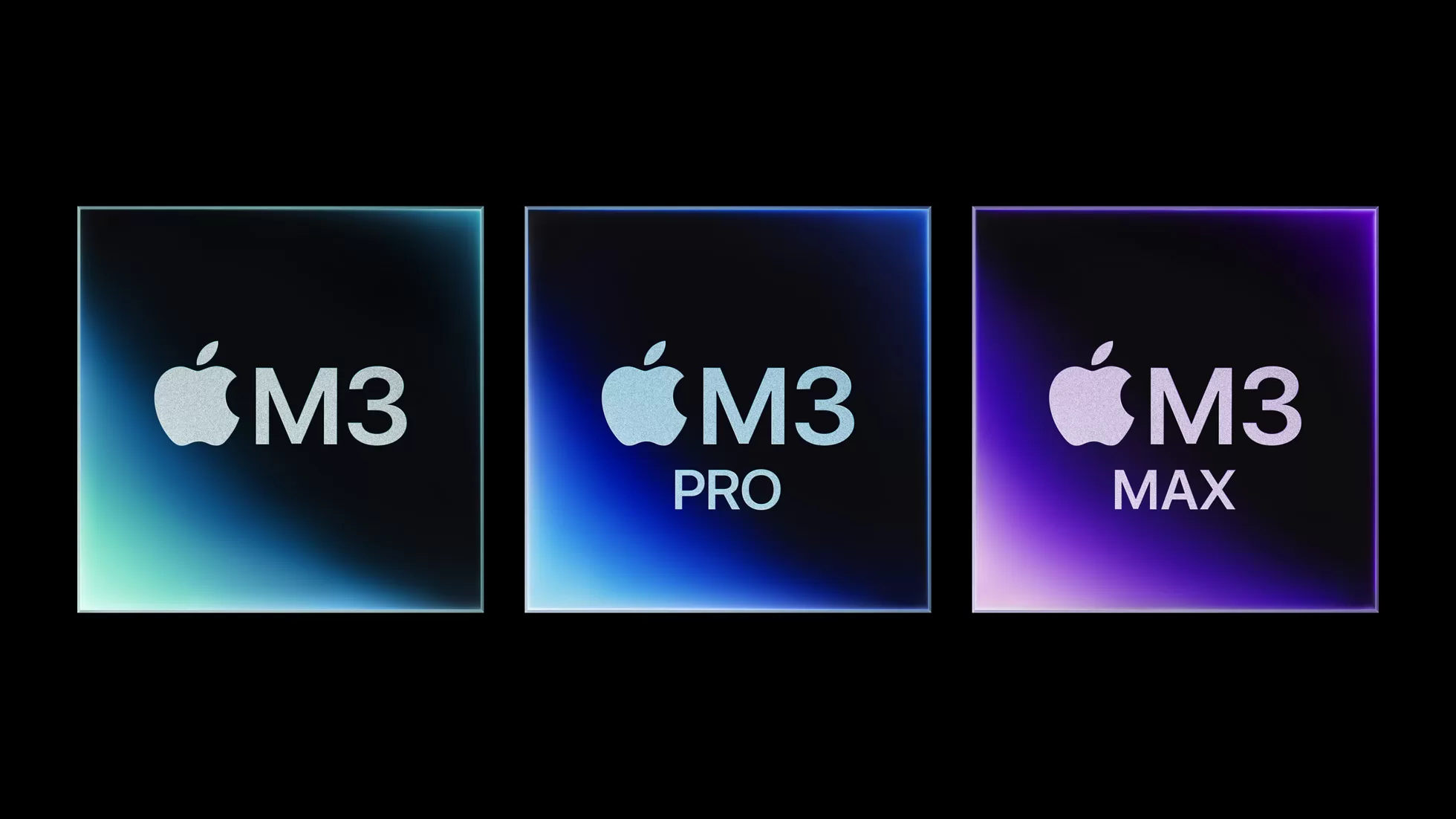Apple’s “Scary Fast” event brought us a family of new processors that up the ante when it comes to performance. The new M3 series of processors, consisting of the M3, M3 Pro and the M3 Max, bring along a bevvy of features and optimisations that empower a significant leap over the M1 and even M2’s performance.
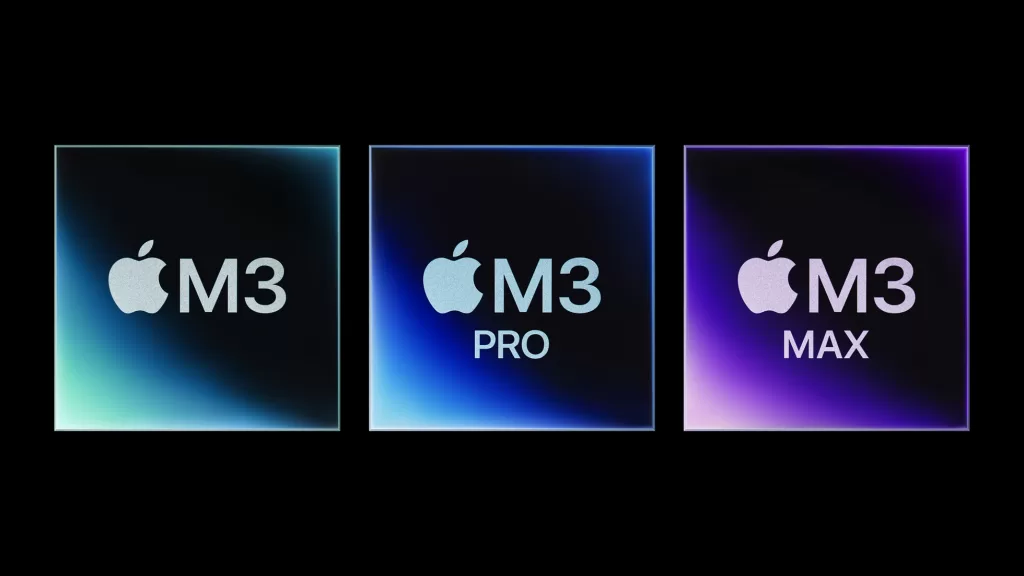
The new M3 family of Apple silicone is the first system on a chip (SoC) to utilise the 3nm process in fabrication. This allows Apple to fit more transistors into a smaller space while increasing the processing speed and efficiency. The increased number of transistors has also resulted in the GPU and NPU of the M3 family getting a supercharge.
Apple is touting that the new M3 family of SoCs bring a whole new level of GPU performance with rendering speeds of up to 2.5x faster than the M1 family. This is made possible by a new feature called Dynamic Caching that allocates the use of local memory for processing in real-time. Dynamic Caching ensures that the exact amount of memory needed for the task is used. This feature is made readily available for developers to leverage. It’s also the cornerstone of Apple silicone’s new generation of GPUs.

Together with this, hardware-accelerated ray tracing is also coming to Apple silicon. Ray tracing will allow programs to render light more realistically and accurately. With ray tracing, designers and developers are able to create more true-to-life renderings and images. If you’re wondering why this sounds so familiar, it’s currently the big thing in gaming. Speaking of, Apple does say that the M3 SoCs are built to handle gaming as well. It will be the first family of Apple silicone SoCs to have gaming specifically on its radar. That said, Baldur’s Gate does run on the Mac running Apple’s M1 and M2 family already.
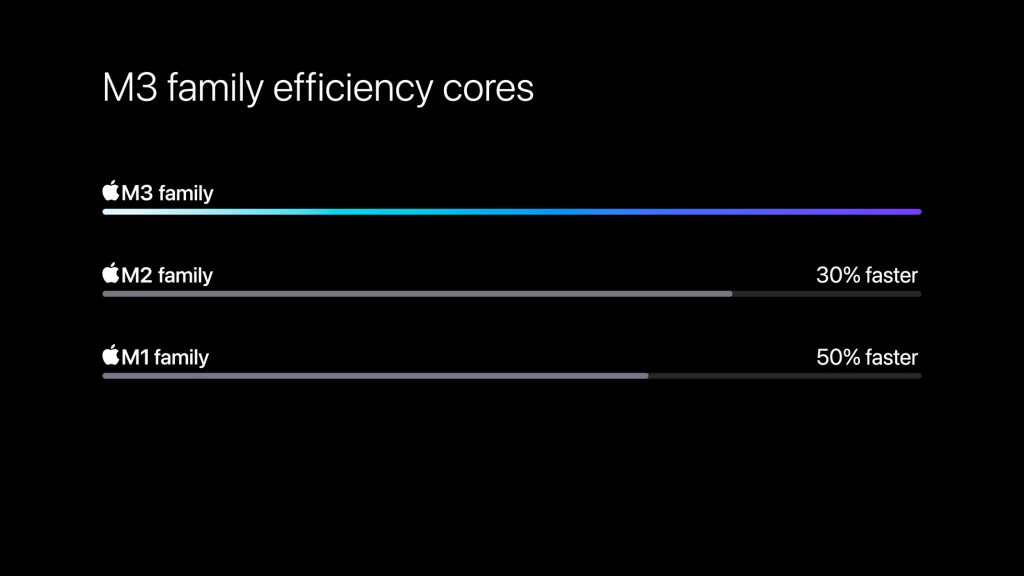
In addition, the M3 family is also enabling mesh shading in Macs. This will help deliver more visually complex scenes and more complex geometric workloads when rendering. The M3 family is also far more power efficient handling the same workloads as the M1 with half the power consumption and up to 65% more performance at its peak.
Apple touts that the new M3 chips perform up to 30% faster than the M1 chips and 15% faster than the M2 chips. This is thanks to the new architecture being used in the M3 chips. This performance increase is also seen in efficiency cores of the M3 family resulting in better multithreading performance with up to 35% more performance at its peak.
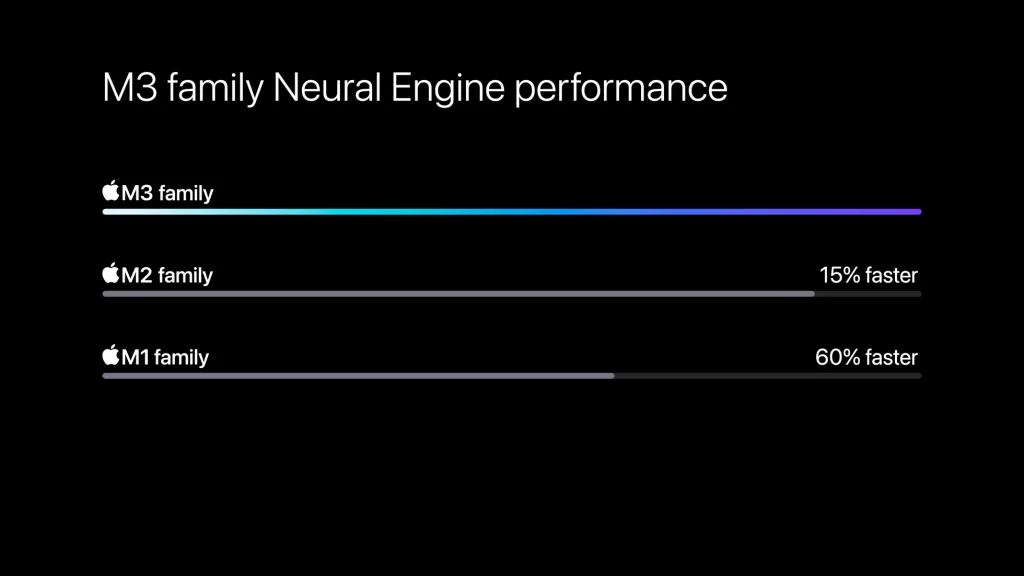
Apple is also pushing its boundaries by upping the ante with its Unified Memory Architecture. The M3 family now supports up to 128GB of memory. This will be able to deliver even faster workloads without the need for copying instructions and datasets multiple times. What’s even more significant is the workloads that are enabled with the larger memory available. AI developers will be able to execute larger transformer models with larger amounts of parameters with increased memory support.
Together with the improvements for the CPU and GPU, the NPUs on the M3 family are also getting a bump in performance. The M3 family’s NPU is up to 60% faster than the M1 family and 15% faster than the M2 family. All three chips also come with an advanced media engine which provides hardware acceleration for the most popular video codecs including H.264, HEVC, ProRes and ProRes RAW.
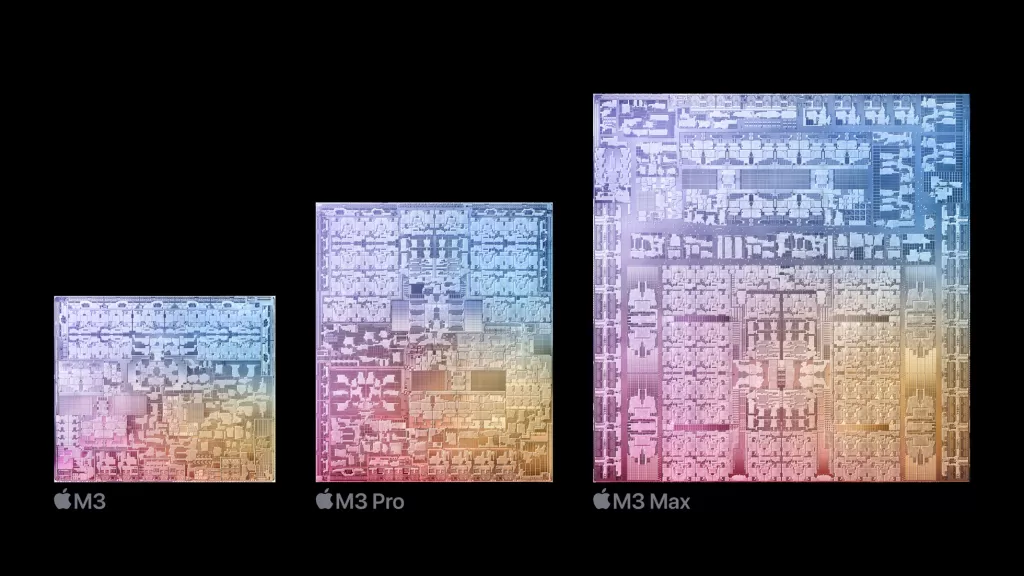
| Apple M3 variant | Number of transistors (Billion) | GPU Cores | CPU Cores | Max Unified Memory Supported |
|---|---|---|---|---|
| M3 | 25 | 10 | 8 | 24GB |
| M3 Pro | 37 | 18 | 12 | 36GB |
| M3 Max | 92 | 40 | 16 | 128GB |
